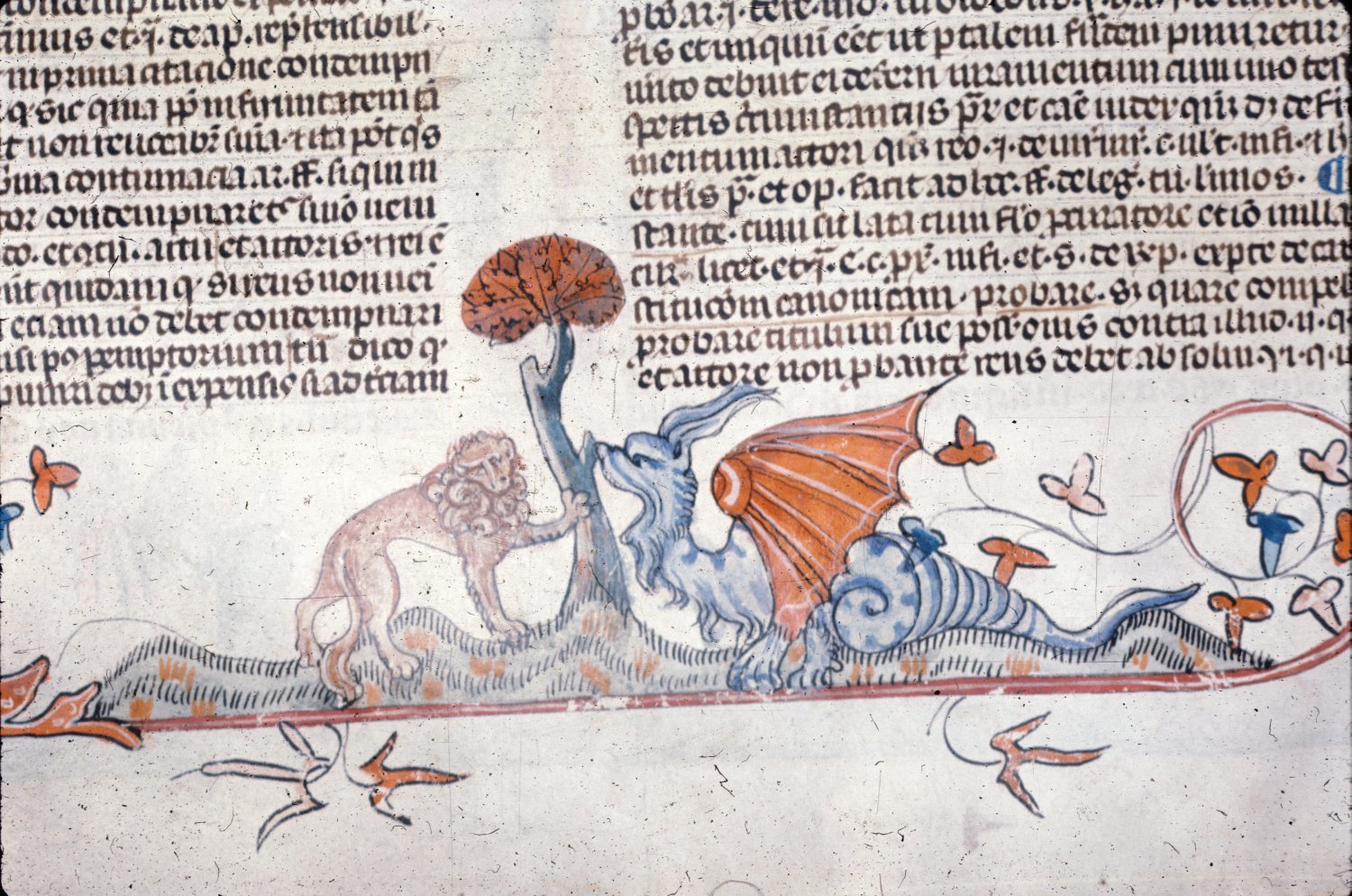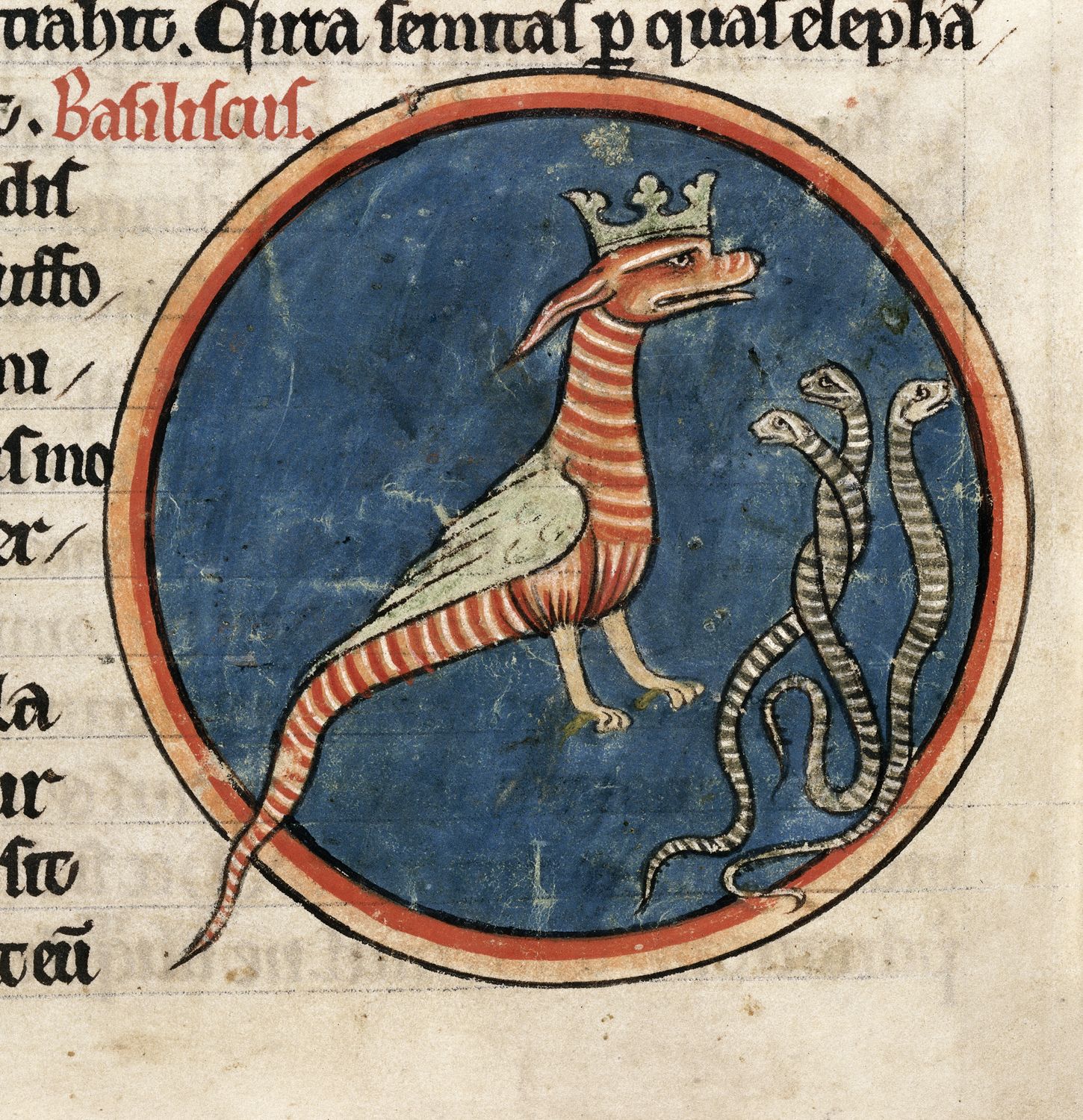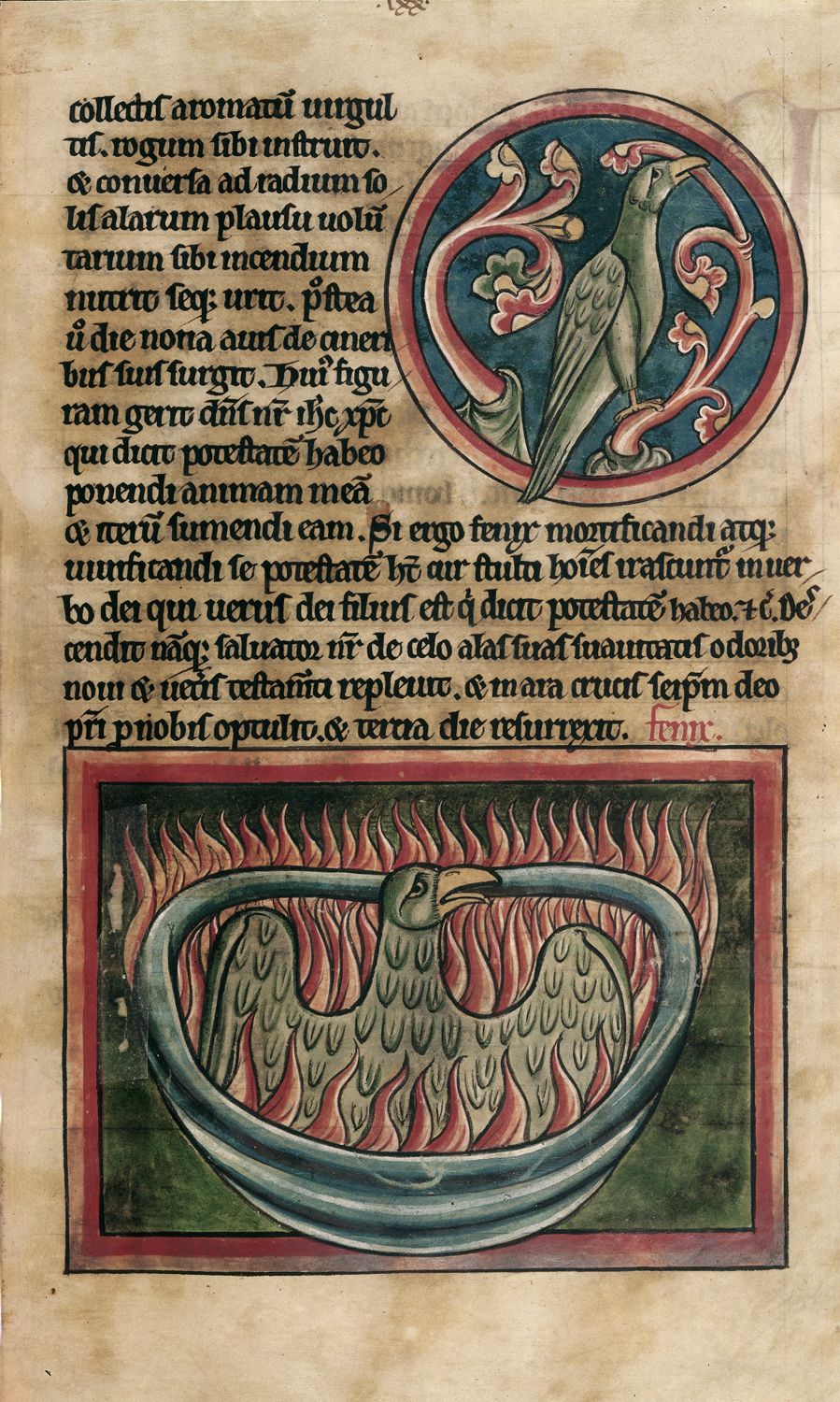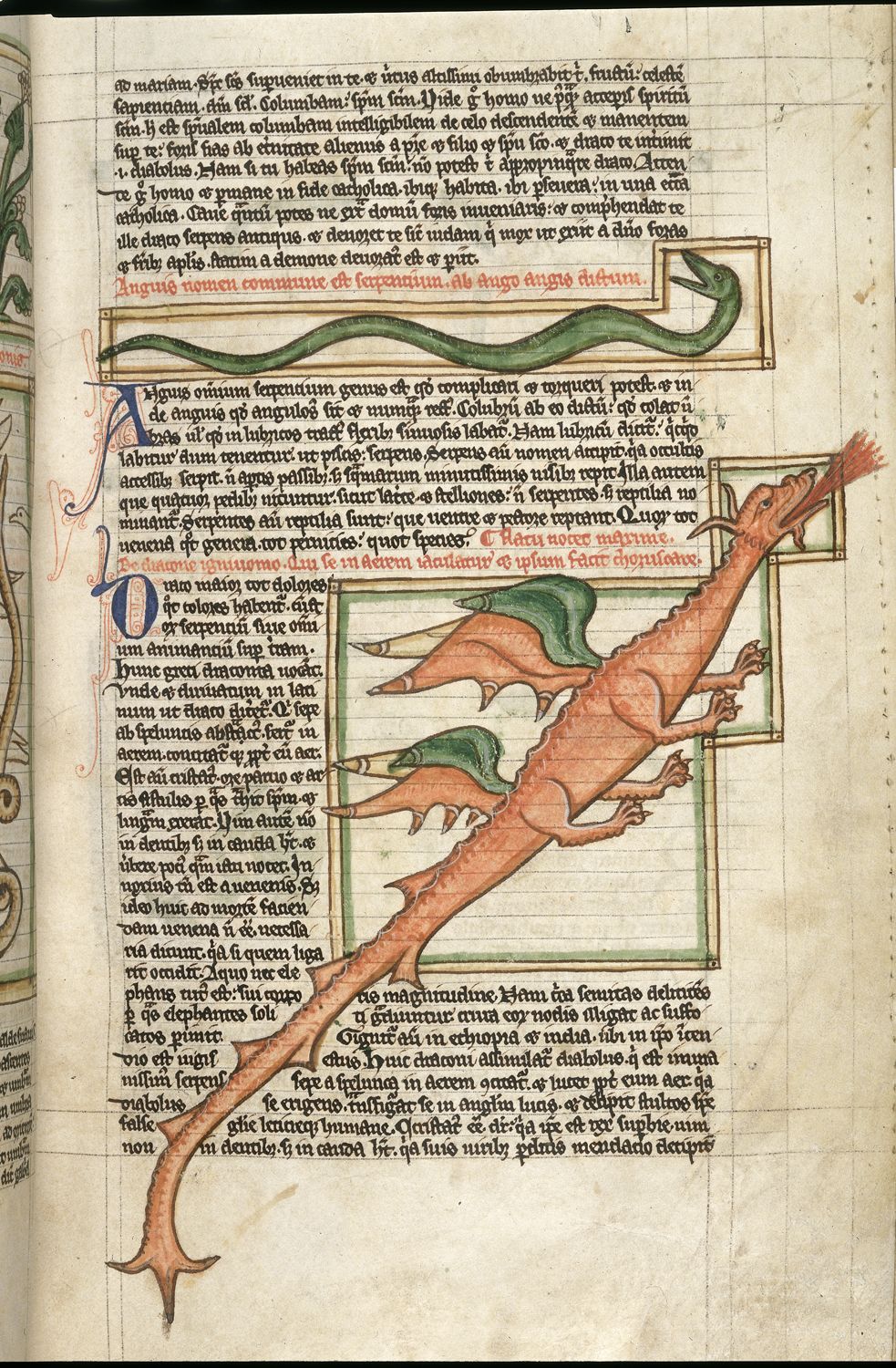
Basilisks and dragons and phoenixes, oh my! These fantastic beasts are not creatures you’re likely to see on your next holiday, but in the Middle Ages, they commonly appeared in bestiaries alongside real animals like eagles, lions, badgers and elephants. These magical animals have not faded from the literary imagination and appear frequently in popular culture, like in the Harry Potter series by J. K. Rowling. In Fantastic Beasts and Where to Find Them, Rowling’s contemporary bestiary, the fictional author Newt Scamander writes:
Astounding though it may seem to many wizards, Muggles [non-magical folk] have not always been ignorant of the magical and monstrous creatures that we have worked so long and hard to hide. A glance through Muggle art and literature of the Middle Ages reveals that many of the creatures they now believe to be imaginary were then known to be real. The dragon, the griffin, the unicorn, the phoenix, the centaur—these and more are represented in Muggle works of that period, though usually with almost comical inexactitude. (xiv)
Perhaps our medieval counterparts were onto something. While Rowling’s descriptions may not be any more accurate than those of medieval artists, they share some notable similarities, with a few creative innovations.
Basilisk:

Oxford, Bodley MS 764: “The basilisk’s name in Greek (regulus) means little king, because he is the king of creeping things. Those who see him flee, because his scent will kill them. And he will kill a man simply by looking at him…The basilisk is half-a-foot long, with white spots” (Barber 184).
The basilisk is one of the most fearsome mythical creatures found in medieval bestiaries. Rowling’s description incorporates many of the elements common in most medieval descriptions of the basilisk. She retains the scarlet plume (often depicted as a crown in medieval art) and has made the snake green and longer (50 feet). Most versions differ in their descriptions of the size of the snake, but death by sight is an important part of the myth. The scent of the snake appears in some versions but not others.
Phoenix:

There are two versions of the phoenix myth, both of which appear in Bodley MS 764.
Bodley 764: The phoenix, “lives for 500 years, and when it feels itself growing old, it collects twigs from aromatic plants and builds itself a pyre, on which it sits and spreads its wings to the rays of sun, setting itself on fire. When it has been consumed a new bird arises the next day out of the ashes” (Barber 141).
Bodley 764: “When [the phoenix] knows that the end of its life is approaching, it builds a chrysalis of frankincense and myrrh and other spices, and when it is about to expire it goes into the chrysalis and dies. From its flesh a worm emerges, which gradually grows up” (Barber 142).
Rowling’s phoenix is fire-colored and it has a fairly similar description to those of most bestiaries and that found in the Old English poem “The Phoenix” (a translation/ adaptation of Lactantius’ Latin poem “De Ave Phoenice”). There are multiple versions of how the regeneration happens and its duration, the more common of which involves the pyre. The illustrations often do not depict the phoenix in red and gold, but the immense age and regeneration through fire are quintessential elements of the phoenix myth.
Dragon:

Bodley 764: “The dragon is larger than all the rest of the serpents and than all other animals in the world…It has a crest, a small mouth and narrow nostrils, through which it breathes, and it puts out its tongue. It’s strength is not in its teeth, but its tail, and it harms more by blows than by force of impact” (Barber 183).
Rowling’s dragons vary by breed, of which she identifies ten. Most of her dragons are fire-breathing and they resemble the dragons usually depicted in contemporary art, film, and literature. Dragon illustrations vary greatly in their portrayal of size, color and characteristics. One of the most famous Old English stories about dragons appears in Beowulf, in which the dragon is slayed. J. R. R. Tolkien famously pays homage to this dragon tale in The Hobbit.
Rowling has crafted an engaging narrative incorporating elements found in medieval bestiaries into her descriptions. She has transformed some of the creatures for plot purposes, but their original origins are very much recognizable. I now leave you with a bit of advice, should you ever encounter a rogue dragon on your travels.
Draco dormiens nunquam titillandus.
(Never tickle a sleeping dragon.)
Maria Fahs
MA Candidate
Department of English
University of Notre Dame
This post is part of an ongoing series on Medieval Animals and their Literary Afterlives.
Sources:
Barber, Richard W., trans. Bestiary Being an English Version of the Bodleian Library, Oxford M. S. Bodley 764 with All the Original Miniatures Reproduced in Facsimile. Woodbridge: Boydell, 1993. Print.
Beowulf: A New Verse Translation. Trans. Seamus Heaney. New York: Norton, 2000. Print.
Cook, Albert Stanburrough (ed.). The Old English Elene, Phoenix, and Physiologus. New Haven: Yale University Press, 1919.
“Detailed Record for Harley 3244.” British Library. British Library, Web. 07 Dec. 2014.
“Detailed Record for Harley 4751.” British Library. British Library, Web. 07 Dec. 2014.
“Detailed Record for Royal 10 E IV.” British Library. British Library, Web. 07 Dec. 2014.
Newt Scamander. Fantastic Beasts & Where to Find Them. New York, NY: Arthur A. Levine Books, 2001. Print.
Tolkein, J.R.R. The Hobbit. New York: Houghton Mifflin Company, 1973. Print.
